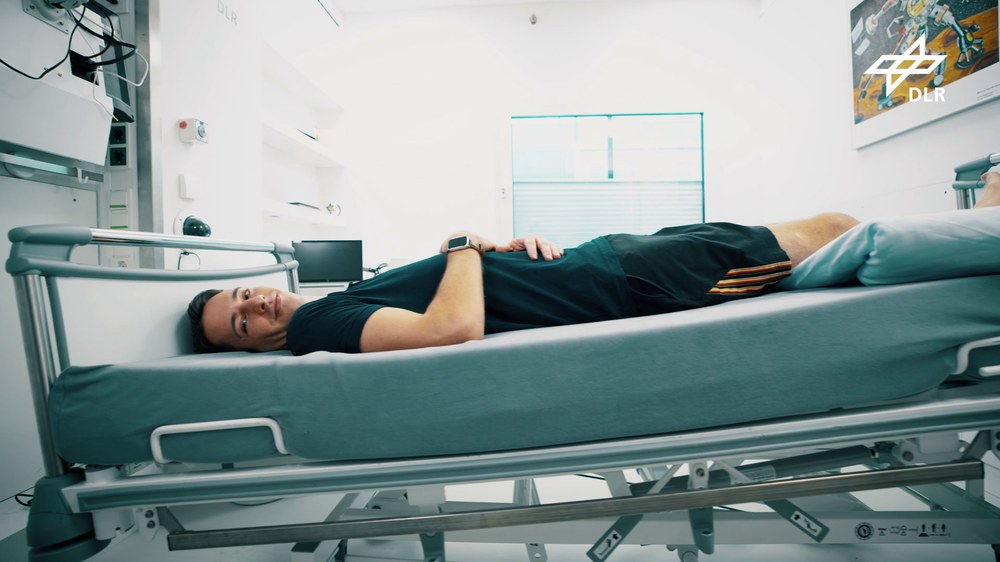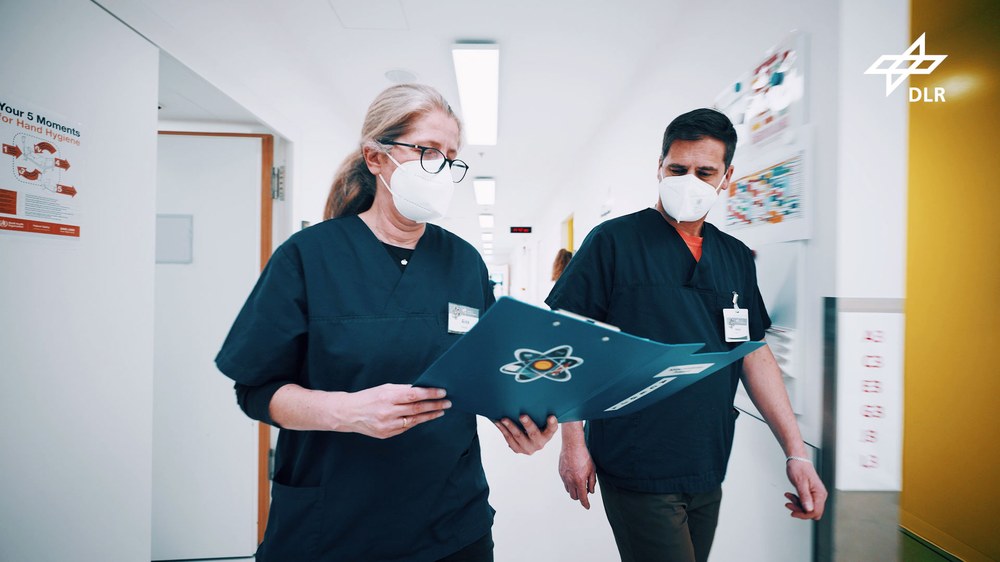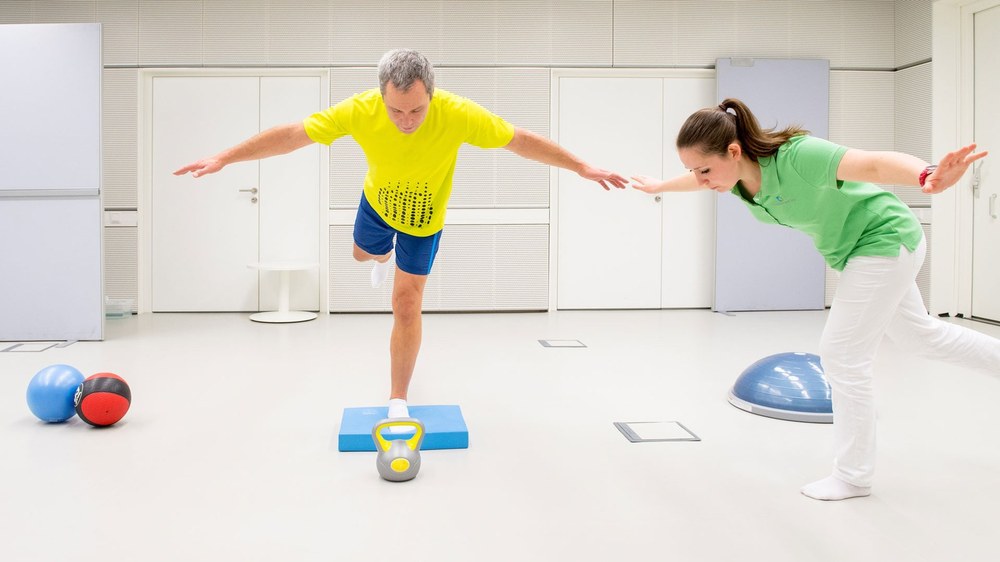Wanted: terrestrial astronauts for bed rest study



- Beginning in autumn 2024, the upcoming study in collaboration with NASA aims to explore the factors contributing to astronauts' coordination issues following missions in space and potential mitigation strategies.
- Twelve participants will spend 88 days at DLR's :envihab in Cologne, of which 60 days will be spent lying in bed.
- Mimicking the shift of fluids that the human body experiences in space, participants will maintain a head-down tilt of six degrees relative to their legs.
- Focus: Spaceflight, space medicine
When astronauts return to Earth, they receive immediate care upon landing – a dedicated team assists them in exiting the space capsule, provides support and conducts initial medical examinations. However, what if the landing were to take place on the Moon or Mars? In such cases, initial assistance would not be available, leaving the spacefarers to fend for themselves. This scenario poses significant challenges due to the potential effects of longer periods spent in microgravity, including dizziness, stumbling and other issues with coordination. This can jeopardise a mission. To prevent this from happening, the German Aerospace Centre (Deutsches Zentrum für Luft- und Raumfahrt; DLR) is researching possible countermeasures in a bed rest study. Anyone interested in participating in the study, which is set to commence in September 2024, can still apply.
Lying down in the name of spaceflight? "The participants do not just lie in bed for 60 days. The bed is also tilted six degrees head down. This means that the head is lower than the feet," explains Edwin Mulder, head of the study at the DLR Institute of Aerospace Medicine in Cologne. "At this angle, the body fluids shift almost exactly as they do for astronauts in space." Without the force of gravity, more fluid flows into the upper half of the body and less into the legs. The intracranial pressure increases, the physical inactivity leads to muscle and bone loss, the sense of balance is impaired and the cardiovascular system changes – these are just some of the consequences of time spent in microgravity, which are also present in bed rest studies. The current Sensorimotor Countermeasures Study (SMC), which is again being carried out in collaboration with the US space agency NASA, is primarily concerned with sensorimotor impairments following prolonged missions in space and possible countermeasures.
Raising a leg to overcome an obstacle – this can pose a challenge for spacefarers
The interplay between sensory perceptions – such as hearing, vision and tactile sensation, as well as motor reactions – such as walking, grasping or throwing – can be disrupted following extended periods in space. "This often leads to impaired orientation or coordination, significantly impacting everyday tasks. For example, something as simple as encountering a rock may require individuals to lift a leg to navigate around it," says Andrea Nitsche from the DLR Institute of Aerospace Medicine. She will select 12 participants who will spend exactly 88 days at the :envihab research facility in Cologne, including preparation and follow-up, with the aim of ensuring that future space explorers can work in a safe and coordinated manner.
The first study campaign at :envihab will start in September 2024, with a subsequent campaign planned for April 2025. Applications are open to individuals between the ages of 24 and 55 with a height of 1.53 to 1.90 metres and a BMI of 18 to 30. They must also be in good health, be non-smokers and have a good command of German. Participants will receive an allowance of 18,000 euros for completing the programme. Of the 88 days, 60 are spent in bed in a head-down position. Mandatory follow-up examinations are carried out three months after the end of the campaign. The selection process involves multiple stages: applicants begin by completing a questionnaire on the website dlr-probandensuche.de. This is followed by participation in an online information session, psychological assessments, telephone interviews, preliminary medical evaluations in Cologne, an assessment day and ultimately, inclusion in the study.
Benefits include increased self-awareness, strength and endurance
The effectiveness of various countermeasures is tested during the campaign. The participants are divided into four groups. One group undergoes proprioceptive training in a ‘gravity bed’ to maintain a sense of position, posture and movement. The 'gravity bed' is a specially designed simulator in which the participants 'float' on a kind of air cushion while lying down. Their feet are strapped to a tilting board so that they have the impression that they are standing. They also have to move in this position and thus train their sense of balance, among other things. The second group also carries out strength and endurance training. The third group receives muscle stimulation through electrical impulses (EMS). The fourth group lies in bed and does not participate in any countermeasure activities. "This control group is very important from a scientific point of view because it demonstrates what happens when any kind of training is omitted. The results of the other groups are compared with this group at the end," says Edwin Mulder.
Assignments are assigned randomly. Everyone is required to undergo daily medical examinations and experiments and to carry out every activity lying down: Personal hygiene, going to the toilet, possible leisure activities, eating. The test subjects receive freshly prepared, balanced meals that are measured in grams and millilitres to meet their individual needs. Participants may not leave the :envihab premises during the 88 days. However, they can be moved from their single rooms to a communal room in bed for shared activities such as board games or watching television. The 88 days include two weeks of rehabilitation following the bed rest phase. All the physical effects of the bed rest are reversed with the support of physiotherapists and trainers.
"DLR has been conducting bed rest studies since the 1980s. We know that participating is no small feat, but a genuine challenge," says Edwin Mulder. "Over the course of three months, our participants, whom we call terrestrial astronauts, form a tight-knit community. Many of them find it special to participate in a study that is important for the success of future space missions."

Exploring space-related health issues through bed rest studies
Your consent to the storage of data ('cookies') is required for the playback of this video on Quickchannel.com. You can view and change your current data storage settings at any time under privacy.
Related links
Related news
Bed rest studies at DLR – research for people in space and on Earth
Bed rest studies represent a standard practice in space medicine research, mimicking the physiological effects of microgravity on Earth. The responses observed in participants undergoing extended bed rest closely parallel those encountered in space environments. Moreover, depending on the research goals, there are inherent benefits to commencing simulations on Earth. This is because conditions can be controlled more easily on Earth and results can be obtained much more quickly.
Over the years, DLR has gained a great deal of experience in the field of short-term and long-term bed rest studies. The first bed rest study in 1988 served as preparation for the D-2 mission. At that time, the space shuttle Columbia carried two German astronauts, Ulrich Walter and Hans Schlegel, into orbit for 10 days. More than three decades later, long-term missions, for example to the Moon or Mars, have taken centre stage in research.
Without gravity, muscles and bones deteriorate significantly, body fluids shift to the upper half of the body and the entire cardiovascular system is subjected to less effort and loses efficiency. In short: compared to degeneration on Earth, this process takes place in space as if in fast forward. Human physiological microgravity research is therefore not only important for astronauts. Space medicine also means health research for people on Earth.
